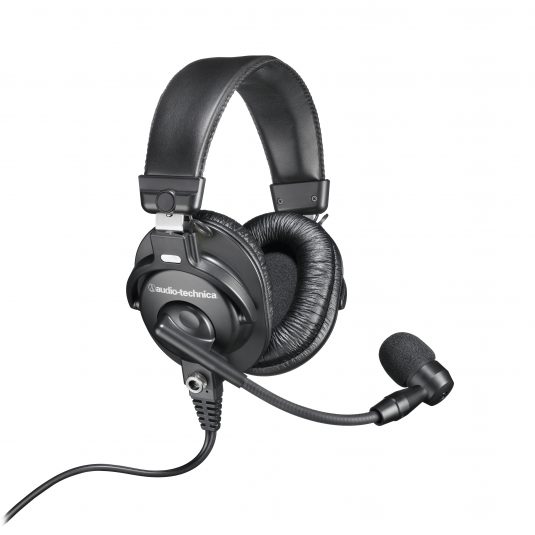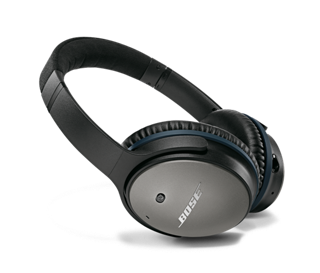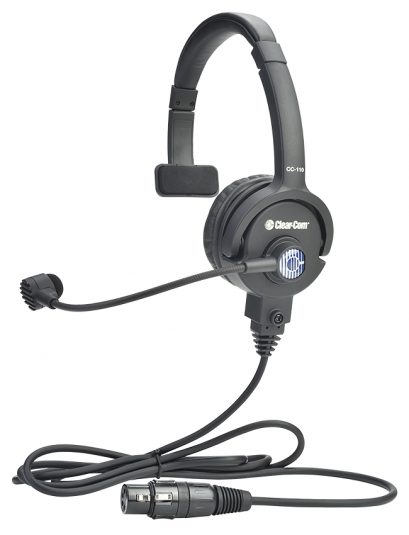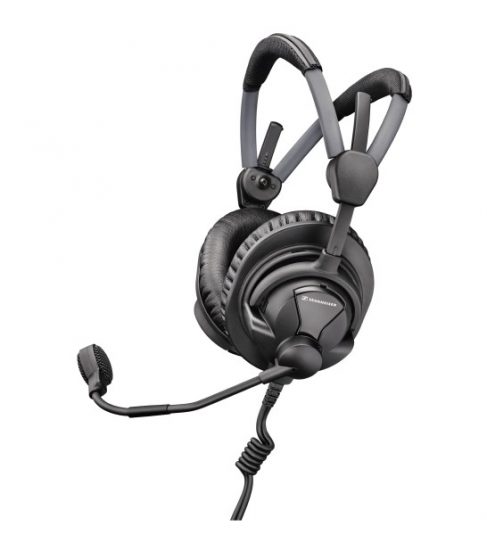Tech Focus: Headphones and Headsets
Story Highlights
For want of a nail, the shoe was lost; for want of a shoe, the horse was lost … You remember the rest of this early introduction into logic. It’s also a useful trope for the role of the headset in broadcast audio: the most intimate piece of wearable tech in the business is the least expensive, most ubiquitous, yet barely acknowledged of any piece of professional-audio gear on the truck or in the studio. Yet entire seasons and careers can turn on what passes through them.
Joe Prout, senior broadcast director, sales, Dale Pro Audio, says most audio professionals look at the basics when evaluating a headset: “audio quality of the mic capsule, isolation from noise into the mic in the milieu they’re mixing in, stability of the boom arm, comfort of the headphones, and isolation in the headphones due to crowd sound and other noisy conditions.” But, by their very nature, headsets tend to be very personal choices, with users vetting their look, feel, and sound quality with varying degrees of emphasis.
Cultural Icons
Headphones took on widespread cultural significance in 2014 when Apple bought the Beats brand, developed in part by rap star Dr. Dre, for $3 billion. The Apple deal was a culmination of a trend Beats had precipitated when the brand was launched three years earlier, accelerating a mass consumer migration away from now relatively puny earbuds.
Headphones and headsets (the latter defined by their ability to send and receive audio versus hear-only headphones) have also been at the center of cultural and economic news around sports. In 2014, Bose made news when it became the sole vendor of headsets to the NFL in a deal reported to substantially top the $40 million — and a later $50 million offer — paid annually by Motorola, the league’s supplier for the previous 13 years. That same year, San Francisco 49ers quarterback Colin Kaepernick, who this season has led a growing trend of silent protests during the playing of the national anthem before games, was fined $10,000 for wearing Beats headphones at a press conference in the wake of the announcement of the exclusive Bose/NFL deal. A key tenet of the deal was that all coaches and other sideline personnel would wear Bose headphones, and, although players were not required to wear them, they could not wear other brands in front of cameras.
The Basics
Headsets may have a narrow range of function, but they also have a variety of types, particularly when it comes to the earpieces. The main types are over-the-ear and on-the-ear; two other formats — ear-hook and in-ear — have gained some traction in professional applications.
- Over-the-ear headsets and headphones are considered the best choice for maximum external-noise isolation and comfort. Audio is also effectively prevented from getting out.
- On-the-ear headsets are lighter in weight. They not totally block out external noise but can provide satisfactory noise isolation if properly positioned over the ear. A small amount of noise may also be emitted from the earcups when audio is played at higher volumes.
- Ear-hook headsets are essentially earphones that fit inside the outer ear and are held in place with a band or clips. They are extremely lightweight and ideal for keeping earphones in place while engaging in vigorous activities, making them a favorite with reality-show A2s.
- In-ears are basically earbuds, and their audio quality can vary considerably. However, they stay in place without clips or bands. Tight-fitting ones can effectively shut out almost all external noise. The most lightweight of all, they are seen often in call centers, where users need to keep them on for long stretches and need the isolation they can offer, although millennial audio professionals bring them into game-audio production — an area quickly converging with broadcast sports — as an artifact of their music-consumption habits.
Like many sports A1s, Phil Adler, who mixes NFL games among other sports for CBS, isn’t a fan of using a headset while mixing. “Too many people to listen to in addition to the mix,” he points out. But he sees plenty of them in the environment, including low-profile Westone earbud types used by some announcers and by some submixers; parab operators tend to stay with the Sennheiser headsets from the CP Communications production trucks. He says some early-look versions of Sennheiser’s new HMD27 are also starting to show up on announcer podiums.
The odd look of parabolic microphones may pique viewers’ interest, and quarterback communications systems make news when their security gets breached. But headsets have become instantly recognizable icons of broadcast-sports audio, second only perhaps to the handheld microphone as the item on-screen that reminds viewers that somebody has something important to say.
Part 2 — What’s on the Market
Critical monitoring in active live-broadcast environments has always seen the A1 reaching for a pair of headphones to get more-intense control of the listening space, and the headset remains the most intimate piece of wearable tech in the business. These items are among the least expensive, most ubiquitous, yet barely acknowledged piece of professional-audio gear on the truck or in the studio. This month, SVG is giving them some well-deserved love. Here are top offerings from some of the leading vendors.
 Audio-Technica
Audio-Technica
The BPHS1 broadcast stereo headset with dynamic boom microphone features closed-back circumaural (around-the-ear) earcups designed to provide maximum comfort and ambient-noise rejection with minimal ear fatigue. The moving-coil dynamic microphone, which can be positioned for use on either side of the mouth, has a unidirectional polar pattern tailored for pickup of speech with maximum voice intelligibility and high off-axis rejection. The BPHS1 includes a user-replaceable detachable 3.4 m (11-ft.) cable terminating in two output connectors, one each for the microphone and headphone. Microphone output is a three-pin XLRM-type connector, and the headphone output is a three-conductor ¼-in. connector. Three windscreens are also included to protect against noise and pops from breath and wind.
The ATH-M50x professional monitor headphones have exceptional power handling and very high SPL capabilities and feature a closed-back cushioned earcup. Other features include proprietary 45-mm large-aperture drivers with rare-earth magnets and copper-clad–aluminum wire voice coils; 90-degree swiveling earcups for easy, one-ear monitoring; and detachable cables (includes a 1.2- to 3-meter coiled cable, 3-meter straight cable, and 1.2-meter straight cable).
Clear-Com
The CC-110 (single-ear) and CC-220 (double-ear) are high-performance headsets with cardioid dynamic microphones that emphasize the speech band for greater intelligibility. The headset is reversible and can fit on either ear; the gooseneck microphone can swivel to either side. When swung up, the mic is quickly muted for privacy, and an audible “click” occurs in the headset. The CC-300 (single over-ear) and the CC-400 (double over-ear) high-performance headsets come with a cardioid dynamic microphone. They have a flexible design: the XLR cable can be easily replaced, allowing it to be repaired in the field. Like the CC-110 and CC-220 headsets, the microphone has a 300-degree range of movement, so it can fit on either the left or right ear, and the gooseneck microphone can swivel to either side.
Pliant Technologies
Introduced at IBC 2016, the SmartBoom Lite series of headsets offers advanced features and design enhancements, including SmartBoom technology, which allows the adjustable microphone boom to act as an on/off switch for quick muting. The headset provides high ambient-noise reduction and produces high-quality audio using a cardioid dynamic microphone. In addition, the closed-back, on-ear headsets feature a single-ear lightweight design with enhanced acoustic isolation.
Riedel
Riedel’s MAX series headsets have been specially designed for use in areas with high ambient-noise levels. The headsets feature excellent attenuation abilities and, therefore, provide optimal hearing protection for users. The special noise-canceling electret or dynamic microphone guarantees clear communications in all conditions. The soft headset cushions are easily detachable for quick exchange and fit perfectly to the ear. The microphone boom rotates 270 degrees and allows the microphone to be worn either on the left-hand or right-hand side.
RTS
RTS has taken up the iconic Telex brand in broadcasting. The MH-300 and MH-300L Series single-sided and MH-302 and MH-302L Series dual-sided headsets and headphones offer modular design, lightweight construction, installation options, and multifunction use. The noise-canceling microphones, combined with the headphone transducers, provide clear and precise communication in noisy environments. The MH Series headsets are audio-level limited and conform to the EU Council Directive 2003/10/EC.
Sennheiser
The new 27 series broadcast headsets, introduced at IBC 2016, comprise the HME 27 with electret microphone, HMD 27 with dynamic microphone, and the HMDC 27, which is additionally fitted with NoiseGard active noise reduction that protects the commentator against noise bursts. The switchable ActiveGard function reliably detects noise peaks above 110 dB and immediately compresses the signal to 110 dB, ensuring that transmitted information remains fully comprehensible. The HME 27, HMD 27, and HMDC 27 will be available soon. The HMD 26-II-100 broadcast headset is also equipped with the ActiveGard limiter and a dynamic hyper-cardioid patterned microphone. The microphone features noise suppression and has a shock-mounted capsule for absorbing structure-borne noise. The short, flexible part of the boom guarantees correct positioning of the microphone. Key components — cables, ear cushions, padding — are modular and can be replaced easily.
Shure
The BRH440M dual-sided broadcast headset features circumaural earcups to block out background noise. A dynamic cardioid microphone delivers natural, clear vocal reproduction. Versions are available with and without cable. The SRH940 professional reference headphones deliver accurate response across the entire audio spectrum for smooth high-end extension with tight bass. They feature closed-back, collapsible, circumaural design, and detachable straight and coiled cables.



